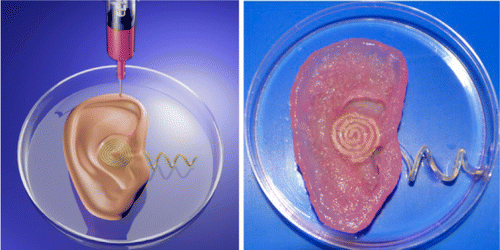The Disgusting, Amazing Printed Ear
- OurStudio

- Nov 30, 2013
- 1 min read

Credit: Princeton
What do you get when you combine 3D printing, sheep cartilage, lab rats, and a little bit of titanium? A human ear.
Researchers at Massachusetts General Hospital, led by bioengineer Thomas Cervantes, announced the successful creation of a lifelike, flexible ear from totally nonhuman sources in the Journal of the Royal Society Interface this summer.
The team used a 3D printer to create a titanium mesh scaffold for the ear, which was then seeded with sheep cartilage cells. The cells grew across the mesh over a period of about three months, creating an ear that can be tailored to mimic the recipient's natural aural appendages-a vast improvement over the current laborious process in which a plastic surgeon carves a rough ear out of cartilage harvested from the patient's own ribs.
To test the ear's performance when hooked up to a blood supply, researchers implanted it onto the backs of lab rats. They were pleased with the results.
"For something like the ear where it's very cosmetic in nature, having a proper shape is one of the most important requirements. We wouldn't want it to look like a shriveled nub," Cervantes, now based at Stanford, told LiveScience.




Comments